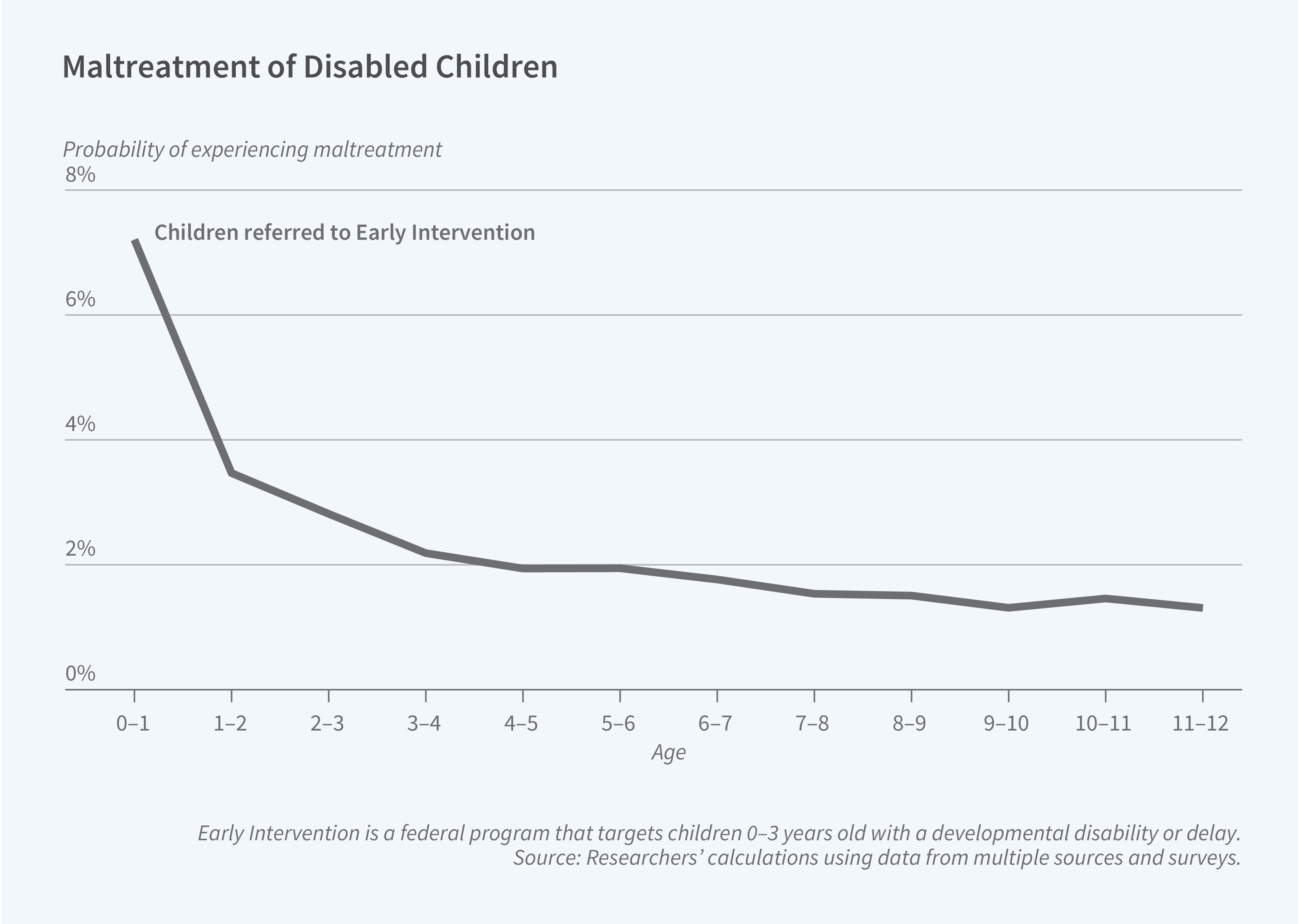Vulnerable Children and the Federal Early Intervention Program

Children with disabilities are three and a half times more likely to suffer from maltreatment. The federal Early Intervention (EI) program, which serves 3.7 percent of children under three, supports families in meeting the developmental needs of children who have, or are at risk for, developmental delays or disabilities. In Can Early Intervention Reduce Future Child Maltreatment? (NBER Working Paper 33341), Anna Aizer and Emilia Brito Rebolledo examine whether EI participation reduces the risk of future maltreatment. EI differs from traditional prevention programs in that the stated purpose is not necessarily to reduce maltreatment. It targets at-risk children rather than parents, operates through a cooperative model that engages families as partners, and intervenes at an earlier stage.
Early intervention services provided in a child’s first year reduce maltreatment risk by 3.3 percentage points.
The researchers analyze administrative data from Rhode Island, linking EI participation records from 2010–19 with child maltreatment data through 2023. They control for a rich set of pretreatment characteristics and compare children who received EI services in their first year of life with children who were evaluated but found ineligible for EI. Their results indicate that early receipt of EI services significantly reduces substantiated neglect after age 3 by 3.3 percentage points, a 45 percent reduction, and lowers the likelihood of foster care placement by 2 percentage points. Smaller effects of the same sign are observed for those receiving EI later.
In the Rhode Island data, children in the EI program come from more disadvantaged backgrounds, with mothers more likely to be single, younger, less educated, and reliant on Medicaid than those in the general population. The researchers suggest that in light of these risk factors, the reduction in maltreatment they observe is likely a lower-bound estimate of EI’s protective effect.
The findings contribute to the literature on early investments in child wellbeing and the role of public programs in reducing maltreatment. They align with evidence from the Nurse-Family Partnership, which also shows protective effects through early, cooperative engagement with families. Given the high costs of child maltreatment — which some estimates put at $230,000 per case — the researchers note that a reduced number of maltreatment cases generates savings that could offset a substantial fraction of the costs of EI expansion.
— Abigail Hiller
This research was supported by the Population Studies and Training Center at Brown University through the generosity of the Eunice Kennedy Shriver National Institute of Child Health and Human Development (P2C HD041020).


